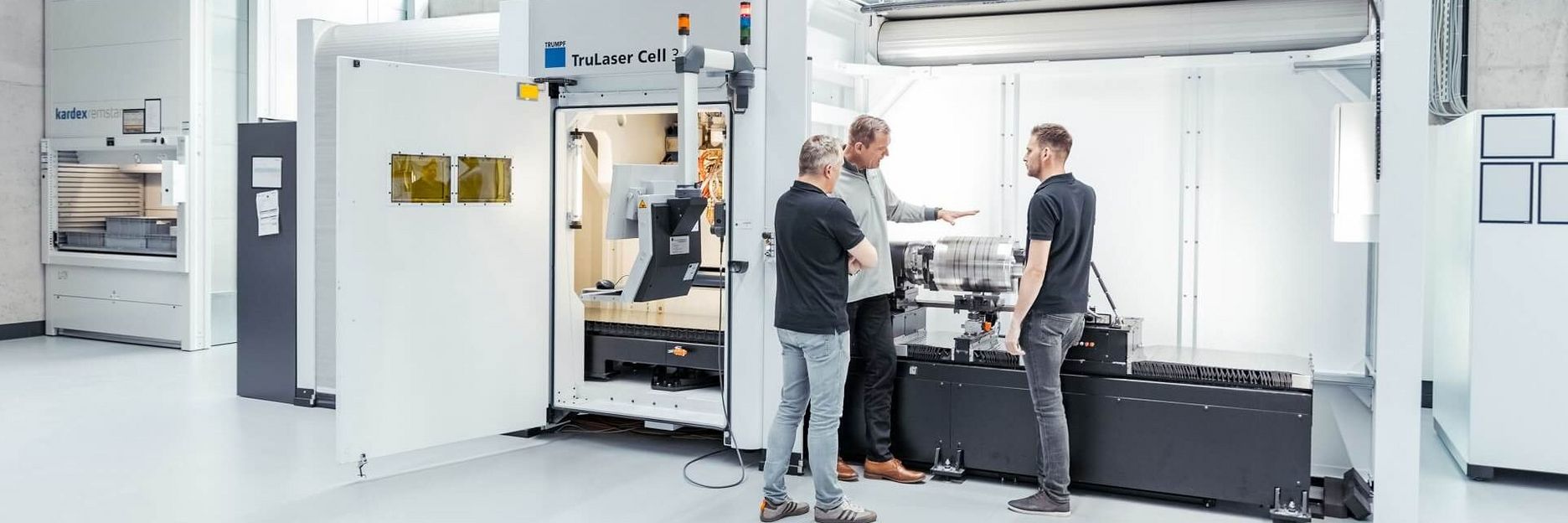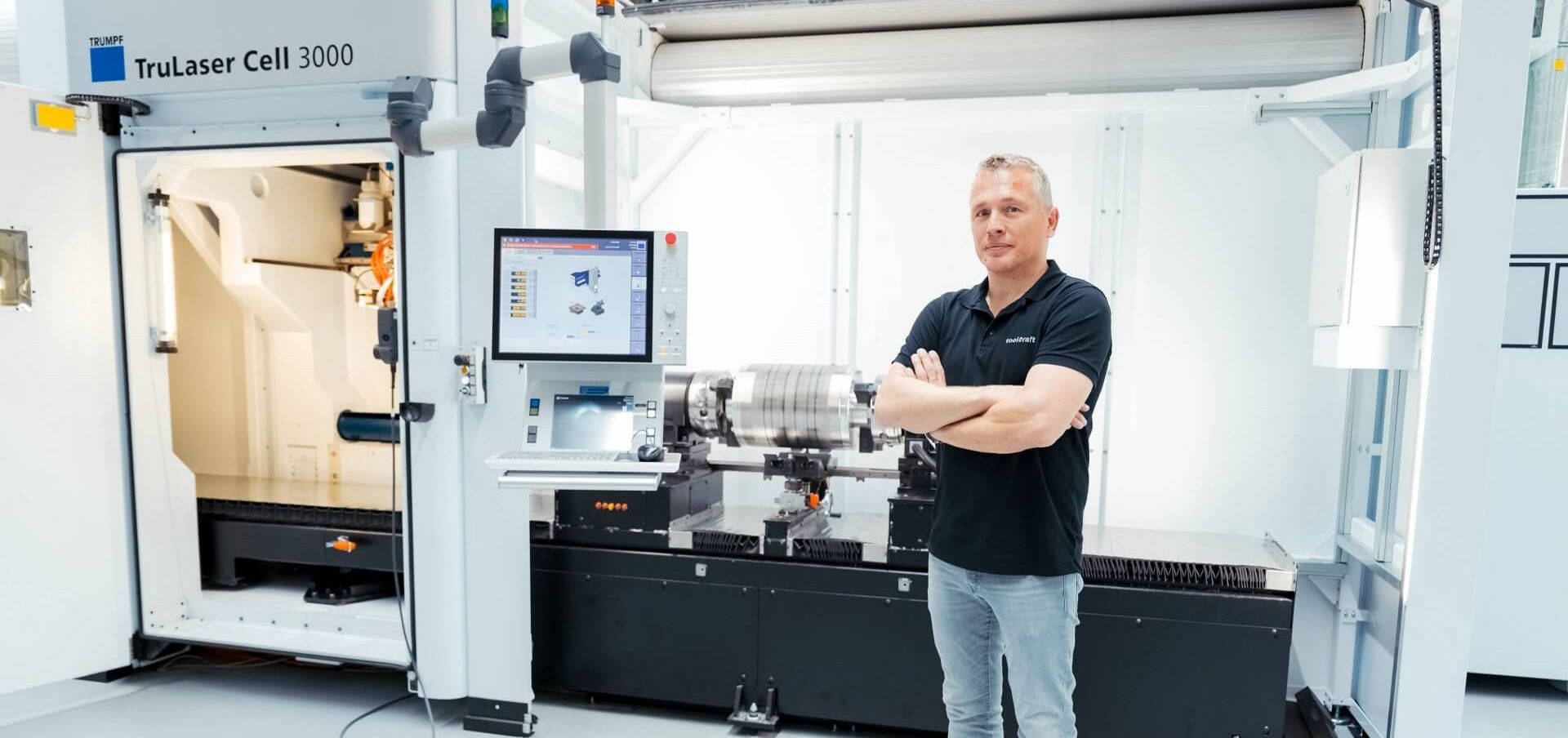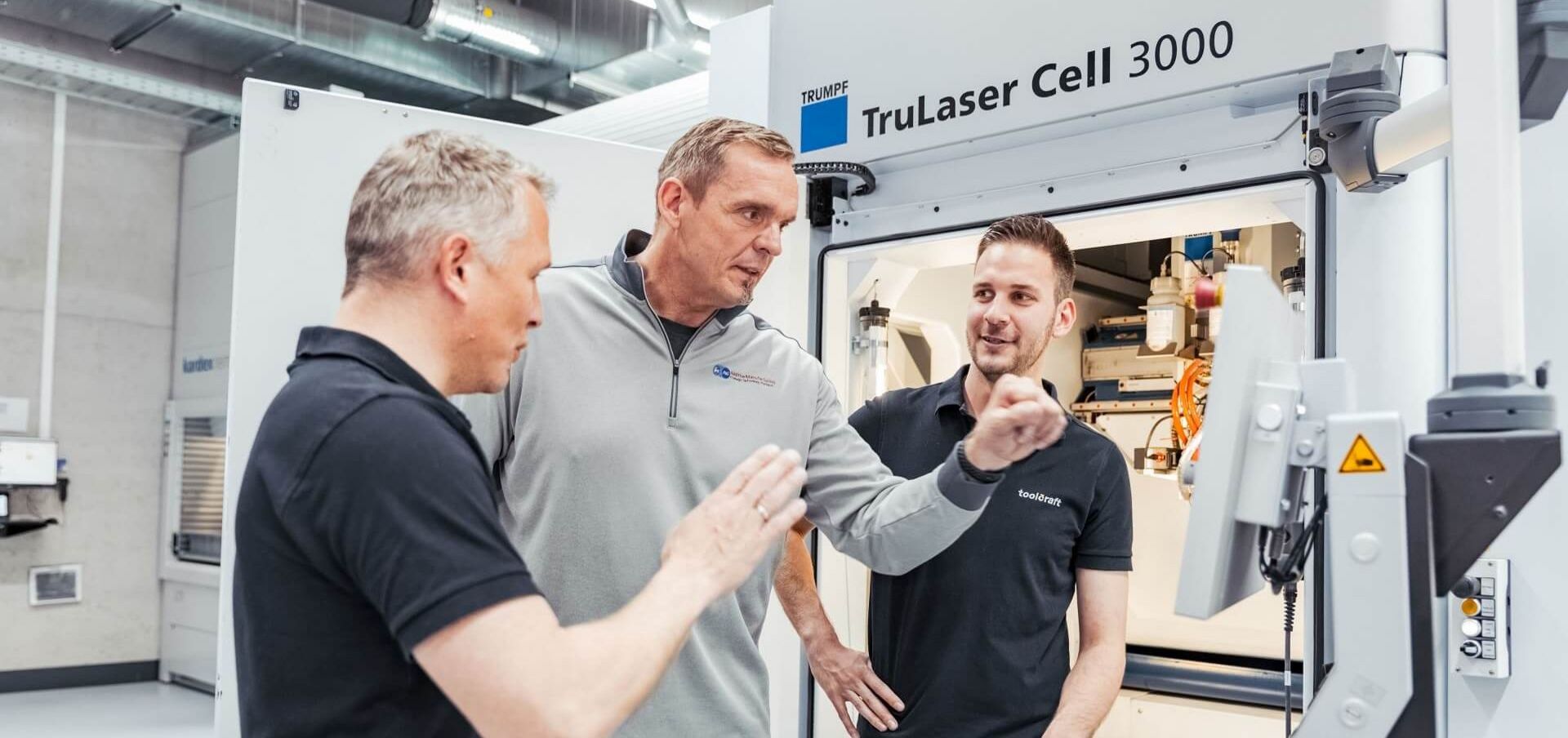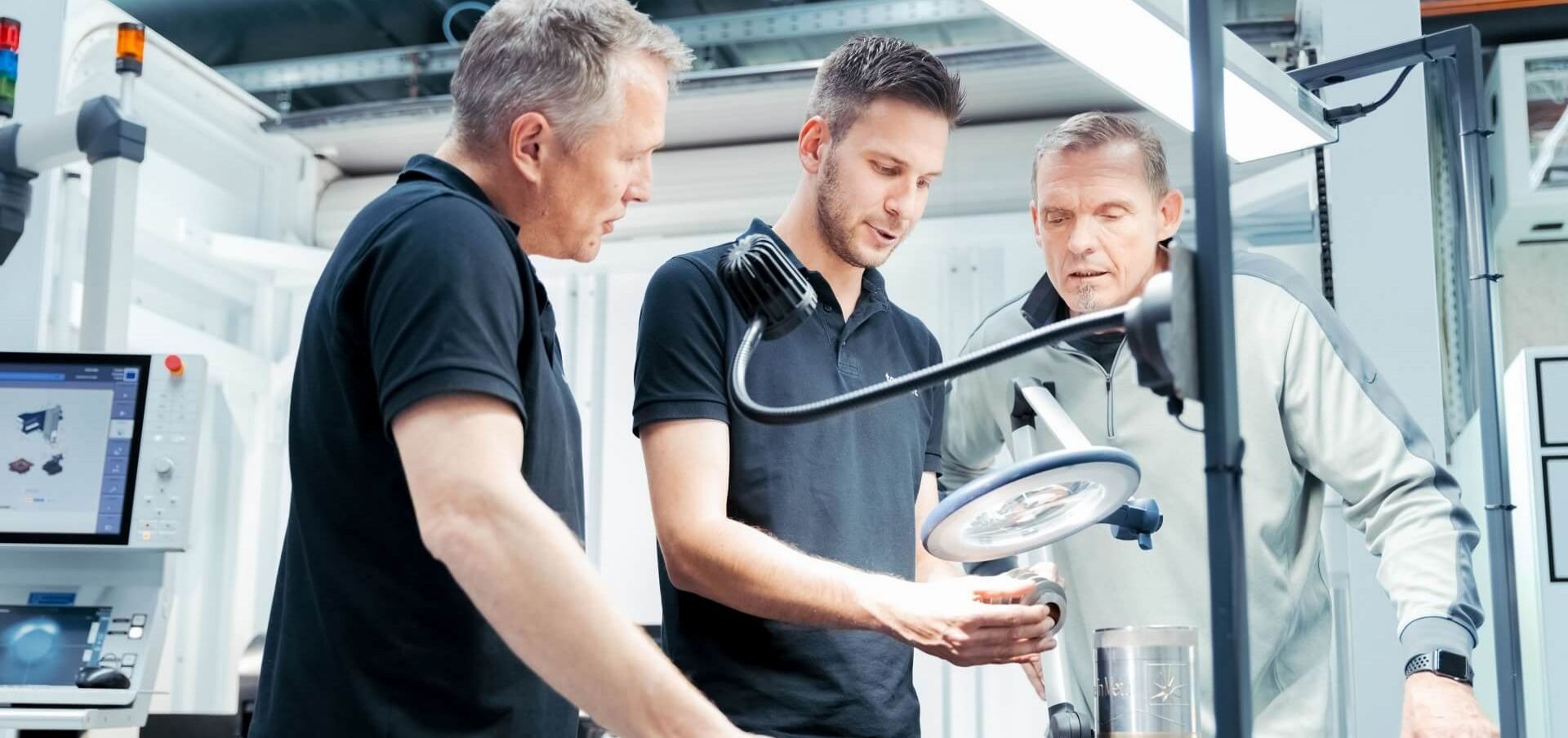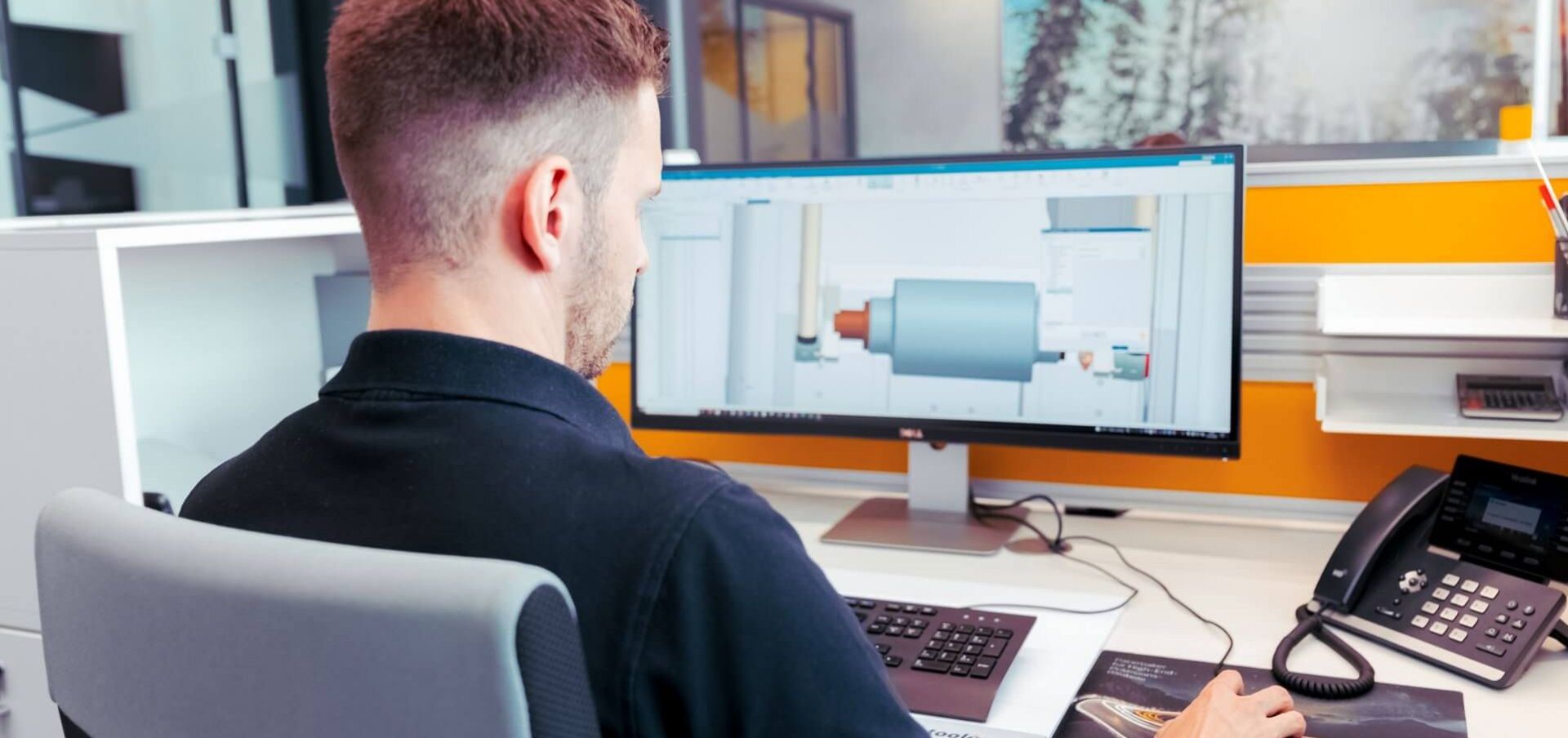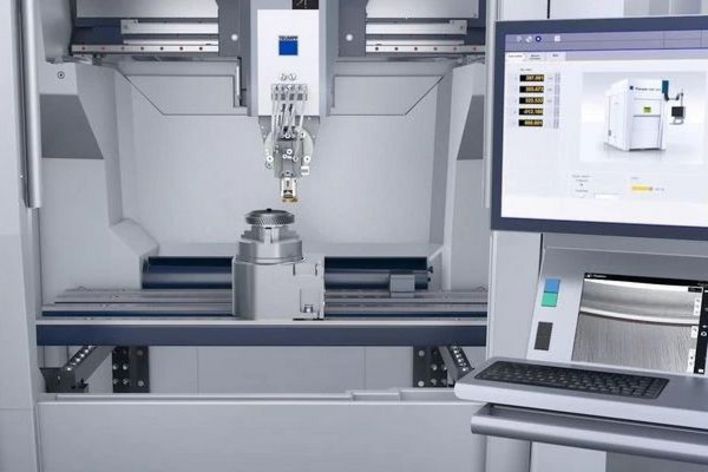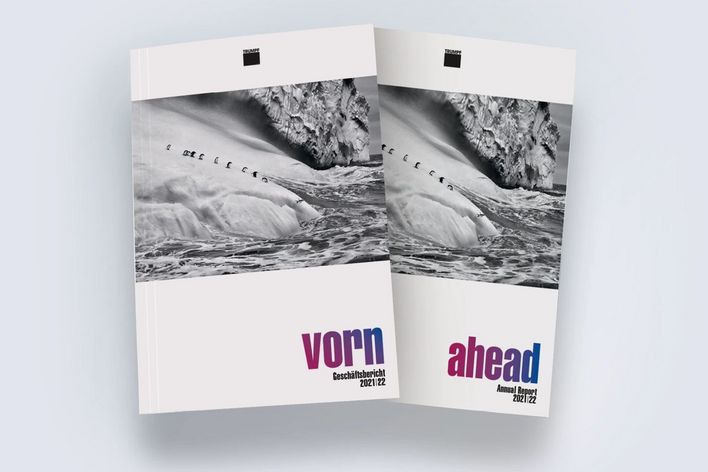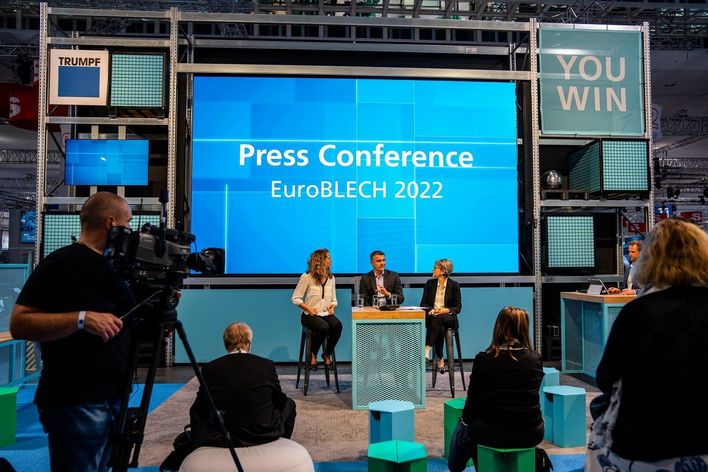The laser glides swiftly over the flawless, smooth surface of a large steel roller while simultaneously spraying an extremely fine metal powder. It merges with the surface and at first only leaves faint lines behind on the component. However, after the laser has made its precision markings several times, the powder transforms the flat lines into three-dimensional structures. Bit by bit, the roller is printed all over with this three-dimensional pattern. Christoph Hauck, Chief Technology and Sales Officer at toolcraft AG, and Klaus Eimann, Technical Director Product & Packaging Innovation at the consumer goods corporation Procter & Gamble, watch the process with fascination through the work window of the TruLaser Cell 3000. It worked: A practical application process resulted from an ingenious idea that will save Procter & Gamble both time and money in the future.
Material application instead of ablation
At Procter & Gamble, the roller is part of a production system for the series production of hygiene articles. Up to now, the pattern on this was milled out of the metal. A complex and laborious process. Klaus Eimann explains: "The structure of the roller is quickly worn out in continuous operation. Until now, this meant we had to completely replace it. That's expensive and not very sustainable." Together with his colleague, Uwe Schneider, Vice President Baby Care Engineering, he investigated the alternatives, and actually found one: Laser material deposition (LMD) is an additive process that is able to create three-dimensional structures. "If we apply material to the component then we can rebuild the structures over and over again after they are worn out - so repairing the roller instead of replacing it," explains Eimann about his thought process. Eimann turned to Christoph Hauck from toolcraft for the series-suitable development of this application.
toolcraft AG is a family company based in Georgensgmünd, Bavaria. The company has made a name for itself internationally with 3D printing and the construction of individual turnkey robot solutions. Hauck and his team have also been working with LMD for years. Hauck is delighted by the possibility of using the technology for a focused application and he approves of a development partnership with Procter & Gamble.
One machine takes care of everything
Hauck knows that he first needs a suitable laser system for the development of the requested LMD process and the subsequent roller manufacture. And it can't just be one off the rack. Moreover, a development partnership is far from a production order. But Hauck says: "Sometimes, you just have to do it." Together with his team, he is developing a requirements specification for a "one-size fits all solution"; a machine that does everything. "If it hadn't worked out with the order, I at least wanted to have a laser machine in the company on which we could operated comprehensive, basic LMD research," he explains, pragmatically.
Christoph Hauck turned to TRUMPF and it turned out that the TruLaser Cell 3000 could theoretically be the machine for the job. With one small catch: It would have to do a bit more that the series system. So Hauck met with Andreas Vogel, expert for customer-specific solutions at TRUMPF. After just a few meetings it became clear: This was his man. "Andreas Vogel and his team listened to exactly what we wanted, made suggestions, and were infected by our enthusiasm," Hauck relates.
Tailored to customer specifications
If we had to give Andreas Vogel a title, "Granter of wishes" would be most fitting. Vogel develops tailored concepts together with his colleagues from the mechanics, software, and electronics fields, for customers who find that the series machines from TRUMPF don't offer them exactly what they need. Customization is becoming increasingly important in the machine tool industry. "More and more frequently, our customers are confronted with tasks that require specific solutions," explains Vogel. "It's the same for toolcraft, for whom we ultimately implemented the largest customer-specific adjustment of a TruLaser Cell 3000 to date."
Designed for large, heavy parts
It was the rotary axis of the TruLaser Cell 3000 that actually came under scrutiny in the custom product. "The Procter & Gamble rollers are huge and weigh several hundred kilograms, and the series rotary axes buckle under that," explains Vogel, continuing: "So we carried out stress tests to determine the maximum weight the rotary axes could bear and what we had to do to make them more robust." Special solutions were also required for the size of the components: "We had to somehow get the large roller into and back out of the machine, and that certainly couldn't be done manually. So we developed a motorized concept," says Vogel.
Along with the numerous further modifications that are required for the LMD process development for Procter & Gamble, TRUMPF experts are building a real LMD play mode for Hauck and his team. A so-called options module provides toolcraft all the options for the development of new processes with the help of laser metal deposition. This also makes the patented high speed laser metal deposition (HS-LMD) available. It enables very fast recoating processes with small layer thicknesses to be achieved for rotationally symmetrical components. "With LMD and HS-LMD we can work with completely new coating materials, for example, wolfram carbides," explains Hauck.
Today, the modified TruLaser Cell 3000 is already in operation at toolcraft. Procter & Gamble issued the company with the order for the series production of the roller. The tailor-made TruLaser Cell 3000 has since been put into continuous operation at toolcraft and Christoph Hauck and his team are bubbling over with ideas in which LMD plays a crucial role. "It may well be that we soon have a few more additional requests for our custom-made machines. A green laser, for example, would be great," says Hauck, grinning. Andreas Vogel is pleased - not least because the machine concept developed for toolcraft has now also piqued the interest of other customers: "We already have several customer requests for whom the concept fits the bill."

